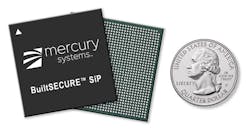Classic SiP Tech Repels Modern Threats (.PDF Download)
Choice of packaging technology can often determine an electronic technology’s ultimate effectiveness in a defense-related application. Once considered highly advanced, system-in-package (SiP) technology is no longer at the forefront of microelectronic packaging.
But, while other applications may seek to leverage the latest and greatest packaging technologies, military system architects cannot leverage new packaging technologies without clear evidence of military-grade reliability. In fact, by using a four-pronged approach, it is possible to modernize a proven, existing packaging technology—SiP—to power military applications in the most threatening environments.
SiP technology is still a valid approach for miniaturizing defense microelectronics, but other packaging options now crowd the scene (Fig. 1). Semiconductor manufacturers and outsourced assembly and test (OSAT) providers have made tremendous progress in the commercialization of through-silicon-via (TSV) technology to interconnect multiple devices in compact form factors. The technology has matured sufficiently such that logic, memory, RF devices, sensors, and passive components are often integrated in a single package. While it would appear that the defense community would widely adopt TSV technology as its next packaging technology, there are still strong needs for SiP devices.
1. The small size of modern SiP technologies allows for extreme miniaturization of digital microelectronics capable of handling defense operating temperatures and conditions.
The performance benefits of TSV technology are well-established at commercial operating temperatures (0° to +70°C). Yet, military missions are not restricted to such a narrow operating temperature range.
In addition to temperature extremes—from −55 to +125°C—military electronics are also exposed to harsh thermal shock conditions from one temperature extreme to the other. Typical operating environments also include high altitudes, severe mechanical shock, vibration, and exposure to moisture. With all of these less-than-ideal operating conditions, military microelectronics are expected to perform flawlessly for years and even decades while being subjected to these operating environments.

